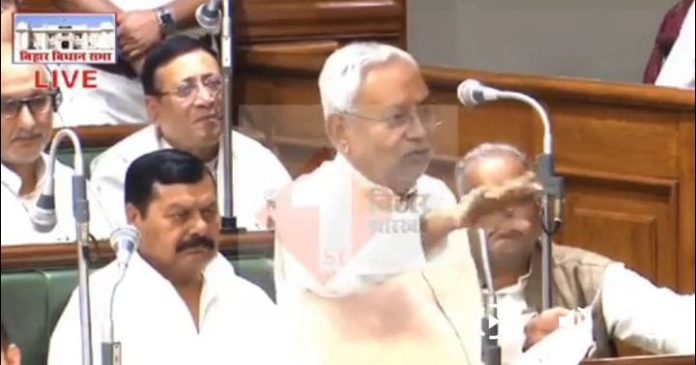
By Sami Ahmad
Patna, Nov. 8, 2023
Chief Minister Nitish Kumar tabled the Bihar Caste Survey 2023 report in the Bihar legislature on Tuesday but no separate data for minorities were provided therein. According to this caste census, there are 17.7 percent Muslims in the state but how many of them are in government jobs was not revealed in the detailed report.
It is to be noted that the same survey took care of putting the number of minorities in the state but when it came to the details of vital statistics, the report remained silent. According to this survey, 1.57 percent of 13.07 crore total population of Bihar are in government jobs. This is 2049370 in figures. While caste-wise figure is out for the government jobs, but what is the percentage of the Muslim community in government jobs is not known.
Caste category-wise, Surjapuri Muslims of Seemanchal are counted to be 15,359 in government jobs which is 0.63 percent of their total population. Bhant, a Muslim backward caste has 1,114 persons in government jobs which is 4.21 percent of their population. There are 1,552 Malik Muslims in government jobs which is 1.39 percent of their population.
As for Hindus, maximum 2,89538 Yadavas are in government jobs which is 1.55 percent of their population. In upper caste Hindus, there are 52,490 Kayasthas in government jobs which is 6.68 percent of their population. Number-wise this is the biggest figure. Bhumihars are at number two in upper castes in government jobs which is 4.99 percent of their population. In number it is 1,87,256. As many as 1,71933 Rajputs are in government jobs which is 3.81 percent of their population.
Three castes – Sheikh, Pathan and Syed – are declared as upper caste in this survey. Of them 39,595 Sheikhs are in government jobs which is 0.79 percent of their population. It is the highest among Muslims while their population is also the highest. There are 10,517 Pathans in the government jobs which comprised 1.07 percent of their total population. There are 7,231 Syeds in government jobs, which is 2.42 percent of their total population.
The ratio of different castes or communities in government jobs is not provided in the caste survey. That could have told the number of total government jobs and the representation of different sections therein.
Bihar has a population of 2,76,68930 which has been declared as poor. They earn less than Rs. 6,000 a month. The number of the poor percent-wise is 34.13 percent. As there are 17.7 percent Muslims, it would be of great help for the government to know what is the percentage of poor Muslims to formulate schemes in the future.
The poor among the general category is recorded at 10,85,913 which is 25 percent of their total population. In backward castes, 33.16 percent are poor which is around 24,77,970. The poor among EBC (Extremely Backward Castes) is 33.58 percent which comes at 33,19,509. In SC (Scheduled castes) the number of the poor is 23,49,111 which is 42.93 percent. In ST (Scheduled Tribes) the number of the poor is 2,00,809 which is 42.70 percent of their population.
The figure for the upper caste Muslims tells that there are 25.84 percent (2,68,398) poor among the Sheikh castes. For Pathans, the poor are 22.20 percent while among the Syeds the poor are 17.61 percent. A desegrated figure for the Muslim community could have put a clearer picture.
The biggest impact of this caste survey is the announcement of the government to raise the reservation bar to 75 percent from the present 60 percent in the state. If the figure of the Muslim community is announced for different segments, it would help the government to chalk out welfare programme for the community. The state government has passed a resolution to raise the reservation quota in the government jobs for EBC to 25 percent from the current 18 percent. For the BC it is proposed to be 18 percent from the current 12 percent. For SC the proposed reservation quota is 20 percent from the current 16 percent while it is proposed to raise to two percent from the current one percent for the ST. The quota for EWS (Economically Weaker Section) remains the same at 10 percent.
Similarly, the figure of education is also provided on a caste basis while the Muslim community, as a whole, is considered educationally backward. The figure for upper caste Sheikhs suggests that only 3.9 percent of them are graduates. While among the Hindu upper castes, there are 29.48 percent graduates among Kayasthas. This disparity requires a figure of the entire Muslim community.




